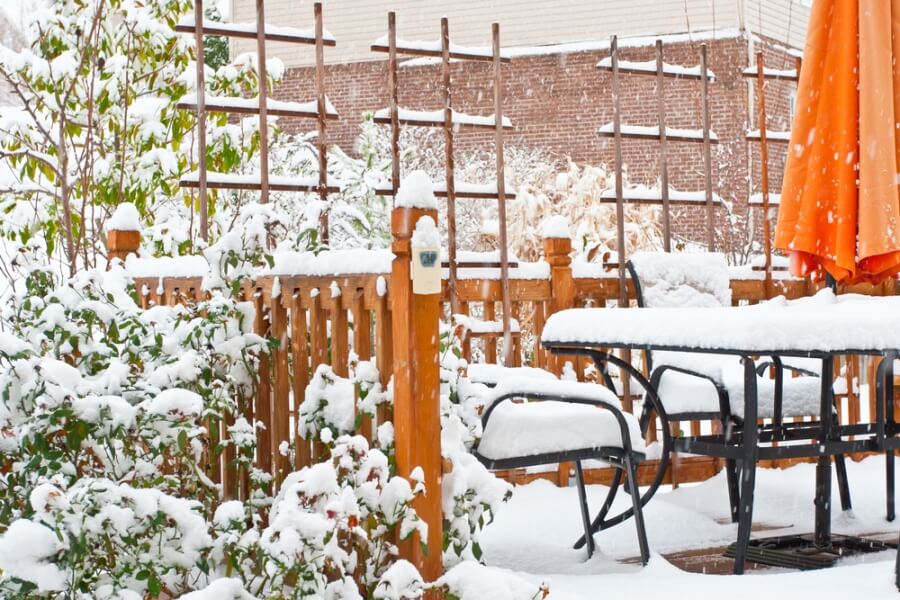As the temperatures start to drop, it’s time to start thinking about how to winterize your outdoor kitchen. By taking a few simple steps now, you can protect your investment and make sure that your outdoor kitchen is ready to go when spring arrives.
Cover Or Remove Any Propane Tanks.
If you have a propane-powered grill, you’ll need to remove the tank and store it indoors for the winter. Some grills come with built-in storage for the propane tank, so if yours has this feature, be sure to use it. If your grill doesn’t have built-in storage, you can purchase a cover for the tank or invest in a heavy-duty storage container that will keep the tank from freezing.
Empty Out The Refrigerator.
If you have a fridge in your outdoor kitchen, be sure to empty it out and unplug it before the first frost hits. All food should be removed from the fridge and either thrown away or moved indoors. Once the fridge is emptied, give it a good cleaning and then leave the door open so that any moisture can evaporate.
Cover Up Your Grill.
If you don’t have built-in storage for your grill, you’ll need to purchase a cover that will protect it from the elements. Be sure to clean your grill before covering it so that any food residue doesn’t attract animals looking for a winter meal.
Bring Any Potted Plants Indoors.
Any potted plants or herbs that you have in your outdoor kitchen will need to be brought inside before the first frost hits. Most plants can’t withstand freezing temperatures, so it’s important to move them indoors or into a greenhouse if you want them to survive the winter months.
Disconnect All Power Sources.
Any electrical appliances that you have in your outdoor kitchen should be unplugged and disconnected from their power source before winter sets in. This includes things like lights, fans, and even small appliances like blenders or mixers. Once everything is disconnected, give each appliance a good cleaning before storing them away for the winter.
Drain All Water Lines.
If your outdoor kitchen has running water, then you’ll need to drain all of the water lines before winter arrives. This includes things like sinks, faucets, and even ice makers (if you have one). Once all of the water is drained from the lines, be sure to turn off the water supply so that no new water can get into the lines and freeze, causing them to burst.
Add Insulation To Exposed Pipes.
Any exposed pipes in your outdoor kitchen will need to be insulated before winter sets in. This will help prevent them from freezing and bursting when cold weather hits. You can purchase pipe insulation at most hardware stores. Simply cut it to size and then attach it around any exposed pipes using tape or zip ties.
Remove Any Perishable Items.
Any items in your outdoor kitchen that could spoil or go bad over the winter months should be removed and either thrown away or stored indoors. This includes things like spices, condiments, oils, and even some types of cookware.
Clean Everything Thoroughly.
Before you close up your outdoor kitchen for the winter , be sure to give everything a good cleaning. This includes countertops, appliances, floors, cabinets, and anything else that might have accumulated dirt or grime over the course of the year. A thorough cleaning now will make opening up your outdoor kitchen much easier come springtime.
By taking these simple steps now, you can ensure that your outdoor kitchen is protected against the harshness of winter weather and ready to use come springtime!

